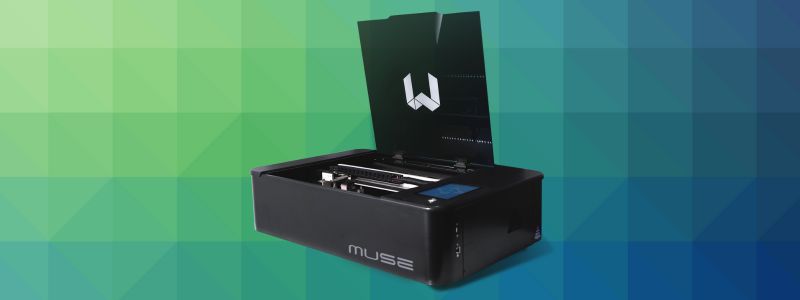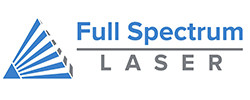Laser cutting and engraving have changed the way materials are now cut and engraved. These laser machines are quickly becoming popular due to the degree of accuracy, speed, and flexibility offered by the laser engraver. The three most commonly used types of laser machines are CO2, Fiber, and UV lasers. In this blog post we will talk about each of these types, their advantages and their limitations.
CO2 Laser Machines

CO2 lasers are the most commonly used type of laser machine. CO2 machines are called that since they use a laser tube that contains a mixture of carbon dioxide, nitrogen, and helium. The laser works by producing a 10.6 micron beam that will heat the material until it vaporizes.They are able to cut objects as small as 0.1 mm. CO2 machines are quite versatile due to their wide range of cuttable materials, such as non-metals.
CO2 lasers are becoming more commonly used in industries that deal with woodworking, packaging, textiles, and automotives. While the CO2 machine is the slowest of the three types and requires regular maintenance, that fact is easily offset by the versatility available at little cost. Another reason CO2 machines are so popular is due to their varying workspaces and relative affordability. A CO2 machine can fit into any workspace.
Fiber Laser Machines

First introduced in the 1990s, Fiber lasers use a solid-state fiber laser source to produce a laser beam. The wavelength of fiber lasers are ten times smaller than that of CO2 machines, making these machines capable of engraving materials made of metal. It can also engrave on plastics quite well, making it usable with everyday objects. Fiber lasers are also able to create details down to a micron.
The amount of precision available in a fiber laser makes it highly sought after by those in the mechanical industries, such as automotive, aerospace, electronics, and metalworking. Fiber lasers are more expensive than CO2 machines, however they have a much longer life expectancy and require far less maintenance.
UV Laser Machines

UV laser machines are quite similar to fiber laser machines. They are built using an ultra-violet solid-state drive. The wavelengths a UV produces is a third that of a fiber engraver, making it able to produce even finer details. The UV laser machines can engrave the same materials a Fiber laser can, as well as a few organic materials, such as wood. The UV uses a special method called “cold processing” to reduce the amount of heat generated during the engraving process, reducing the risk of distorted material.
These capabilities make the UV sought out by individuals in electronics, aerospace, and in the medical field. Since UV machines are newer, they tend to be the most expensive out of the three machines. Additionally, due to its relatively new use, UV lasers are offered in only three potential wattages: 3 Watts, 5 Watts, and 10 Watts.
Direct Comparison
In order to accurately compare the three machine types we have created a chart that will help with this process. Some of the comparisons will be in relative terms for ease of understanding.
| CO2 | Fiber | UV | |
| Price Range | $2,000 - $20,000 | $5,000 - $160,000 | $12,000 - $25,000 |
| Relative Speed | Slow | Fast | Fast |
| Actual Engraving Speed | 500 mm/s | 2,000 mm/s | 5,000 mm/s |
| Wavelength | 10,600 nm | 1,064 mn | 355 nm |
| Accuracy | 0.1 mm | 0.05 mm | 0.01 mm |
| Materials | Non-metals | Metals, some plastic | Metals, some plastic, and wood |
CO2, Fiber, and UV machines are all incredible tools for cutting and engraving materials. Each of them have their own strengths and weaknesses that make them appeal to various different customers. CO2 machines are quite affordable, while Fiber and UV machines are considered worthwhile investments for growing industries. Not sure which machine is right for you, then check out our laser machines here. We also have a video available here for additional help.

